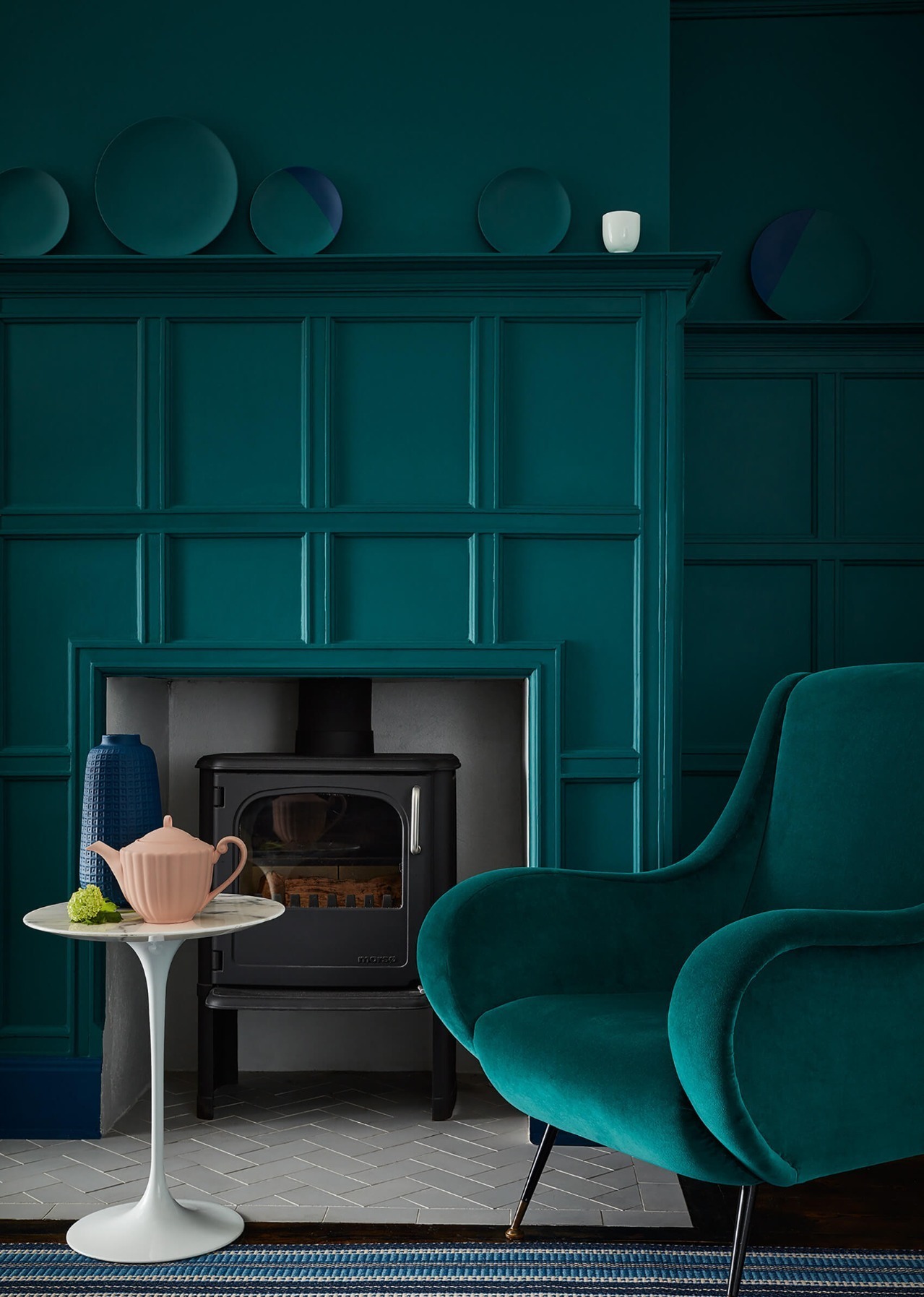Colour Drenching: How to Use This Interior Trend in Your Home
Posted on 21st July 2021 at 10:47
Colour drenching is a fabulous way to take your home decor from boring and bland to something rather spectacular. This is a hot interior trend that can be used in modern and traditional homes to add a sense of drama and create a contemporary look. This post explains what colour drenching is all about and provides plenty of inspiration to help you decide whether this trend is for you.
Colour drenching in interiors is all about taking one colour and using various shades of it in a room, across many different surfaces from the ceiling to the floor. Think walls, radiators, ceiling roses, picture rails, skirting boards, window frames – even furniture and furnishings if you're really committed.
You don't have to go crazy with colour drenching to create a dramatic effect. Even painting a couple of surfaces in the same colour can make a real impact. Take a look at this collection of colour drenched interior images below, featuring paints from Little Greene and Benjamin Moore. Some of them heavily embrace the trend, whereas others are more subtle.


In the top left image, the main colour used for colour drenching is blue. Different tones of blue feature across the walls, skirting board, door frame and chair. The effect is striking but balanced, thanks to the white window frames, bathtub and whitewashed floor. In the top right picture, colour drending is used on the walls, skirting and sofa, with the contrasting lamp giving the room a pop of accent colour.


Colour drenching doesn't have to be done with dark colours – you can go for pastels or bright, funky colours too. In the above left picture, the main colour featured is Little Greene's Marigold, a splendid orange. It's used on the walls and headboard with other orange tones brought into room via the lamp, cushions, artwork and clock. On the right, colour drenching is used substantially around the room. The main colour is a deep teal, seen on the walls, fireplace surround and the chair. Closely related shades are used on the skirting and the decorative plates.


The most powerful example of colour drenching in this article is featured above left with an exquisite, rich royal blue on the walls, ceiling, door frames and skirting. Similar tones are used on the chairs and pouffe, and in the wall art and curtains. On the right, a saturated forest green, used on the wall, door frame, door and even the hinges!
Getting started with colour drenching
First, choose your main colour (or groups of colours). Then decide how far you want to go with colour drenching. A relatively failsafe way to start is by painting radiators, picture rails or interior woodwork the same colour as the walls. That might be enough to get the desired effect that you're after. An alternative way to start is by matching the walls to the colour of your sofa or other large pieces of furniture in your room.
Think about the fifth wall – the ceiling. Is your room suitable to have the ceiling painted in the same colour or tonal shades of that colour? You'll need to consider lighting and the impact that colour drenching might have on your space.
Then there are furnishings to think about, like curtains, cushions, lamps and rugs. These can be used to break up blocks of colour – but make sure they have some tones of your chosen colour in them (e.g in a pattern) to tie them into your scheme. Another good tip is to use metallics and natural textures. They'll add interest but won't intefere with the overall effect.
Want more decorating inspiration?
Follow us on Facebook or Twitter, where we often share room set photos to give you lots of ideas for your next decorating project. You can also browse paint colours here on our website – why not start with our Benjamin Moore Colour Picker tool?
Tagged as: Benjamin Moore, Colour Inspiration, Decorating, Decorating Techniques, Little Greene, Paints
Share this post:







